All growers at some point have to deal with water shortages. Whether it’s through drought, a shorter dry spell without rain, or maybe you’ve got indoor plants, there’s always the question of water. But will plants grow without water?
All plants require water for photosynthesis, transpiration, & the chemical reactions taking place in cells. Without adequate water, plants cannot maintain turgor–the internal cell pressure that keeps stems & leaves stiff–so plants wilt. Without water, most plants will die in 2-3 weeks.
So, this is actually a more complex issue than it first seems. The simple answer is that all plants need water, but things get more nuanced depending on the type of plant, its stage of growth, how much water, and other factors. Let’s dive in!
Will plants grow without water?
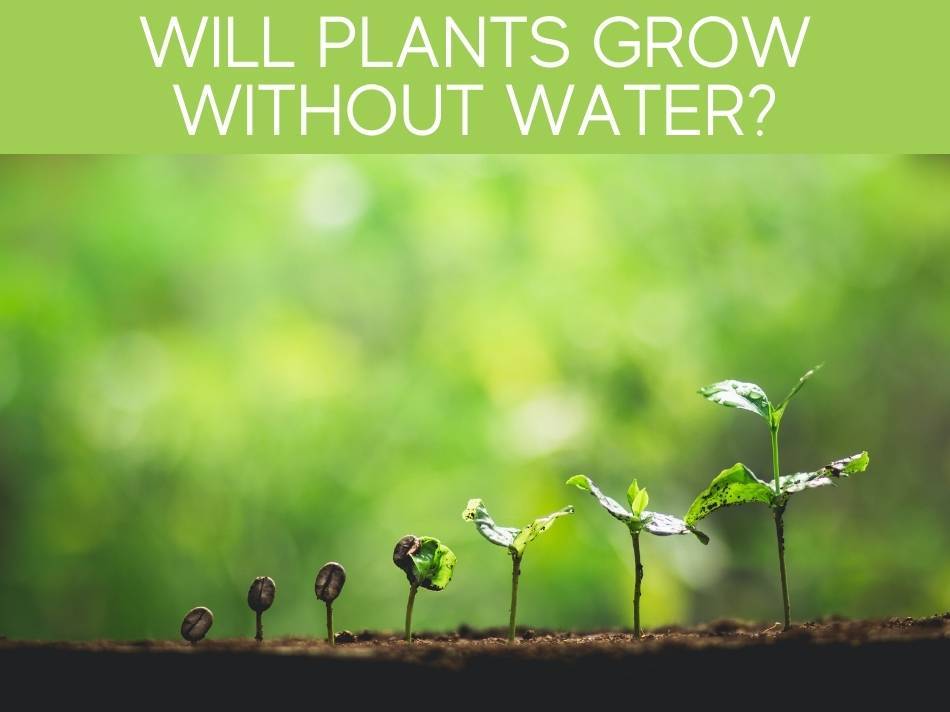
All plants need 3 things to survive & grow:
- Water
- Light
- Air
In the short term–usually a matter of days or weeks–plants can survive and even continue growing without water. This is especially true for drought adapted plants, like succulents, such as cacti.
For example, we’ve all seen the archetypical saguaro cactus, with arms outstretched in the desert. These cacti can survive without rain for literally years. However, that’s only because they’re able to hold onto the water they’ve collected, stored in the fat stem (since cacti have no leaves).
Non-desert plants can also grow without water, but they’re more vulnerable to water shortages.
For example, some prairie grasses put their roots down into the soil as much as 30 feet! Pretty incredible, considering that some of the largest containers for gardening are only 12 inches deep.
Putting down deep roots is one strategy for obtaining water even during prolonged droughts.
But will plants grow without ANY water?
Well, it depends on the plant.
Succulents (and cacti are succulents) store water in their stems.
During dry periods, they draw on that stored water, and can continue to grow. Not forever, but for a while–depending on temperature, and sun & wind exposure.
Other plants–like garden vegetables–are much less tolerant of dry spells.
During summer with warm temperatures–and in dry climates or if it’s windy–even after a few short days, vegetable plants wilt and can die.
Indoor plants are another story. Although they’re protected from wind, indoor environments can be hot & dry. High temperatures & low humidity speed up transpiration, which is water loss from leaves–sort of like how we humans sweat.
As a result, plants slow and even stop growing.
Without adequate water, photosynthesis and cell chemistry cannot continue.
What happens to a plant without water?
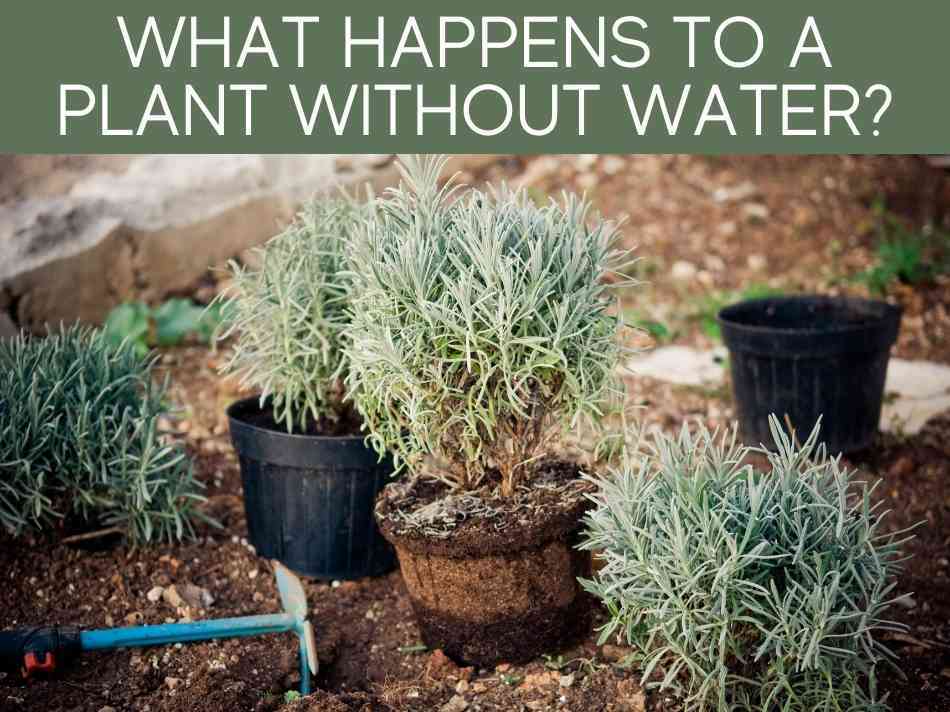
To answer this question, we need to understand why plants need water.
Plants require water for several reasons:
- Photosynthesis:The hydrogen and oxygen atoms in water are used for producing sugar and oxygen.
- Chemical reactions within cells: There are literally hundreds of chemical reactions that occur in plant cells, and water is the medium in which those reactions occur.
- Turgor: To stand up, plant stems (and leaves, flowers, and other structures) need to maintain sufficient pressure inside cells.
OK, so knowing that, what happens to a plant without water?
Simple:
- No photosynthesis: the plant can’t produce food (sugars) for growth.
- Chemical reactions cannot occur.
- Plants wilt. Like a deflating balloon, plant tissues wilt.
So, yeah, water is crucial to plants (and actually, to ALL living things).
For the average plant–like, say, a houseplant or garden vegetable, like a tomato plant–if you gave it NO water, you’d see the following:
- Leaves become dull and lose their shine. This is because the plant slows transpiration to slow its water loss.
- Wilting. As the plant loses more water, cell pressure is too low to maintain turgor, and stems & leaves begin collapsing. Remember the deflating balloon analogy? Same thing happens with plants.
- The plant eventually dies. If the plant loses too much water for too long, plant tissues cannot survive.
How long can a plant survive without water?
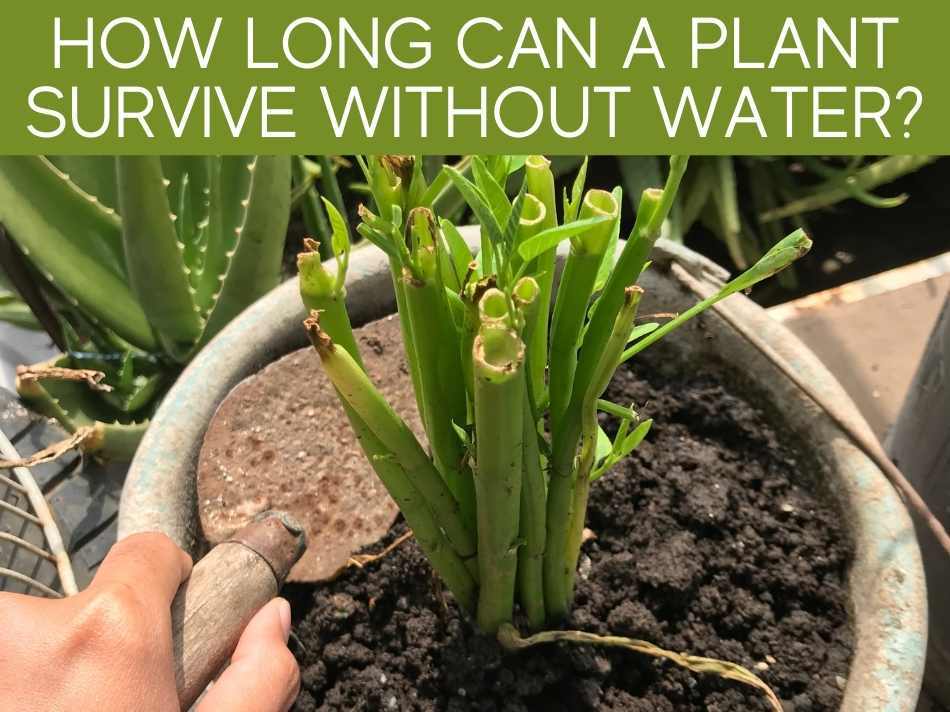
This is a great question, but again, will depend on lots of factors.
For example, a small cacti, exposed to temperatures over 120 degrees F, and sustained high winds could survive for months.
But that’s only because cacti are supremely adapted to those conditions.
But put a tomato plant in the same conditions, and it could be dead within hours.
How long a plant can last without water depends on the plant and environmental conditions.
For example, the same tomato plant, in different conditions could last weeks–without any supplemental water.
How? Well, let’s think about what causes water loss in plants like tomatoes:
- Higher temperature
- Low humidity
- High winds
If you provide the OPPOSITE of those water-intensive conditions, plants will survive longer:
- Lower temperature
- High humidity
- No wind
Of course, you need to keep those conditions within reasonable limits:
- Don’t make temperatures too cold. And putting plants in too-cold temperatures, over too-short a time period, will damage or even kill them.
- Keeping humidity too high for too long can create other problems, like mold, mildew, & fungal attacks.
- Ventilation: Plants need fresh air. Stagnant conditions can make it easier for pests & disease to gain a foothold.
How can I grow without water?
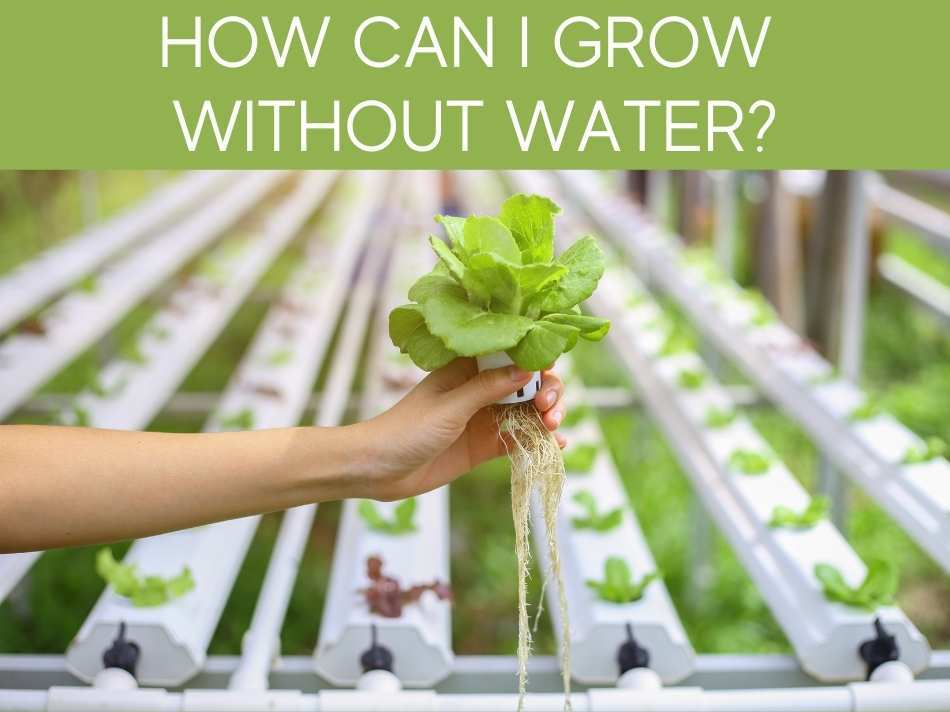
OK, so you want to grow plants without water.
And, although that’s not technically possible–since all plants require water–it IS possible to grow with significantly LESS water.
And, maybe you’re growing vegetables, or maybe you’re going to be out of town for days or weeks and won’t be able to water your plants.
So what can you do?
There are a few options:
- Hydroponics
- Water-conserving strategies
- Drought-tolerant plants
Hydroponics
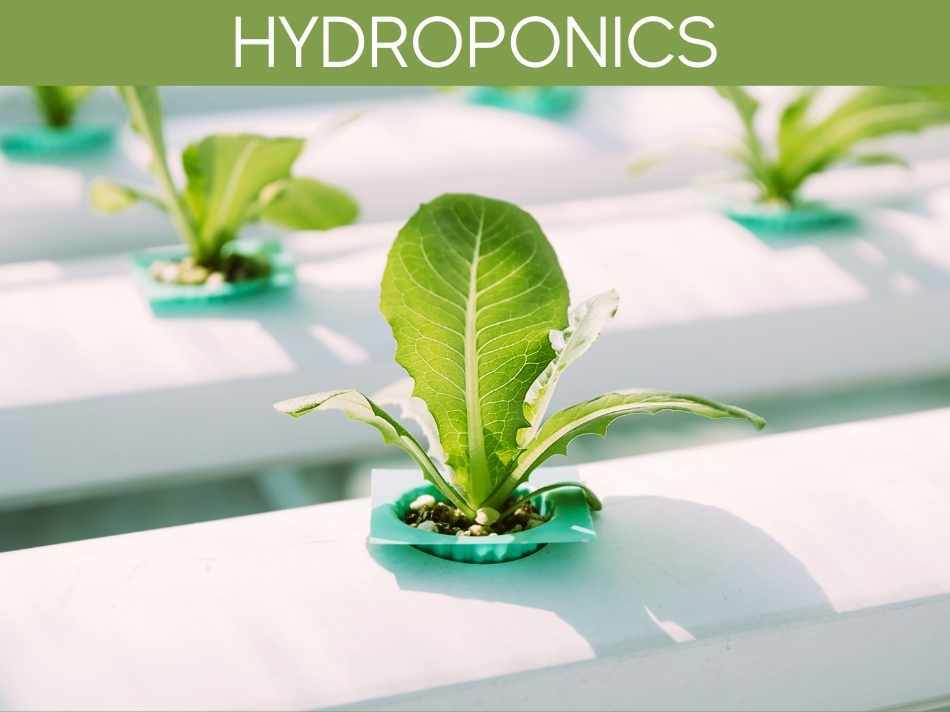
Hydroponics is essentially a system where you use water instead of soil.
Now, that might sound contradictory when we’re talking about how to grow WITHOUT water.
But typically, hydroponic systems require LESS water. That’s because the same water can be used over and over, so long as adequate nutrients are supplied to plants.
Plus, hydroponic systems can provide more regular nutrients, which means that plants will grow better, be healthier, more resistant to diseases & pests, and more productive.
While we’re at it, you might be surprised to find out whether plants grow better in water or soil.
Water-conserving strategies
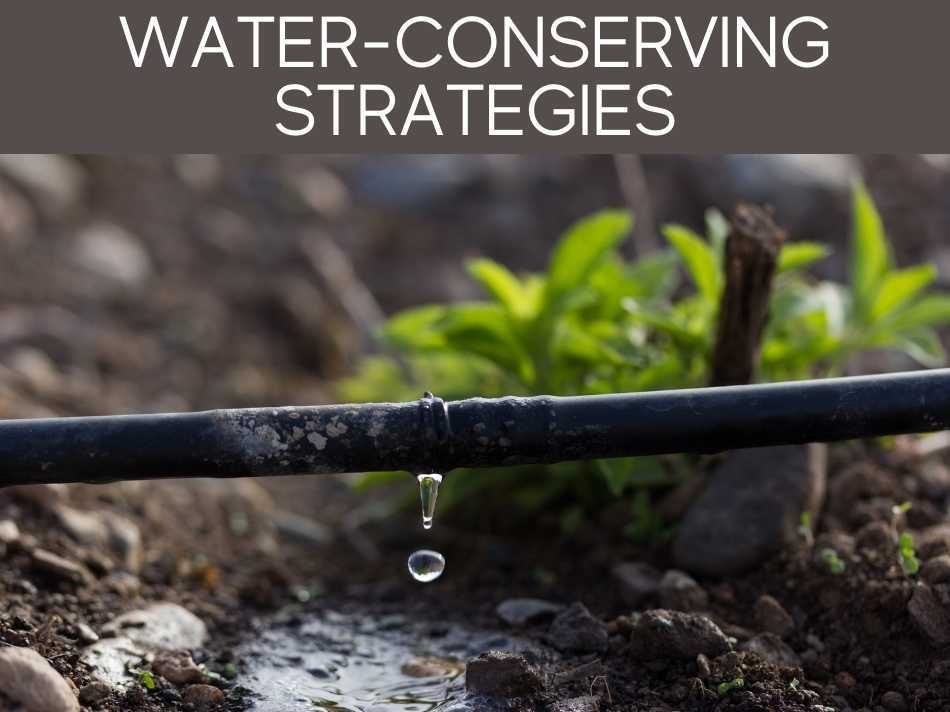
Water conserving strategies for growing plants include:
- Mulching
- Drip irrigation
- Proper timing for watering
Mulching decreases evaporation of water from the soil, allowing more soil moisture to be available for plants.
Drip irrigation ensures that the water you provide gets where plants need it most. With traditional watering, you’d water an entire field. With drip irrigation, you only deliver water to the root zone.
Research has demonstrated that drip irrigation can reduce water consumption by 60% while increasing crop yields by 90%. Pretty incredible!
And proper timing for watering–watering when plants can best use the water, and avoiding the high-evaporation times of day–can also reduce water use.
For example, watering in the morning–when temperatures are lower and when there’s typically less wind–reduces evaporation and water use (since afternoon winds won’t affect hose, drip, or sprinkler patterns.
Drought-tolerant plants
Another strategy for growing with minimal water is to grow plant varieties that require less water.
Often, these will be plants that evolved or are bred to thrive in hot, dry climates and/or plants that are drought-tolerant.
Some vegetable varieties require less water. For example:
- Black-eyed peas
- Okra
- Tomatoes, squash, melons, & zucchini
Plants that cannot survive without moisture
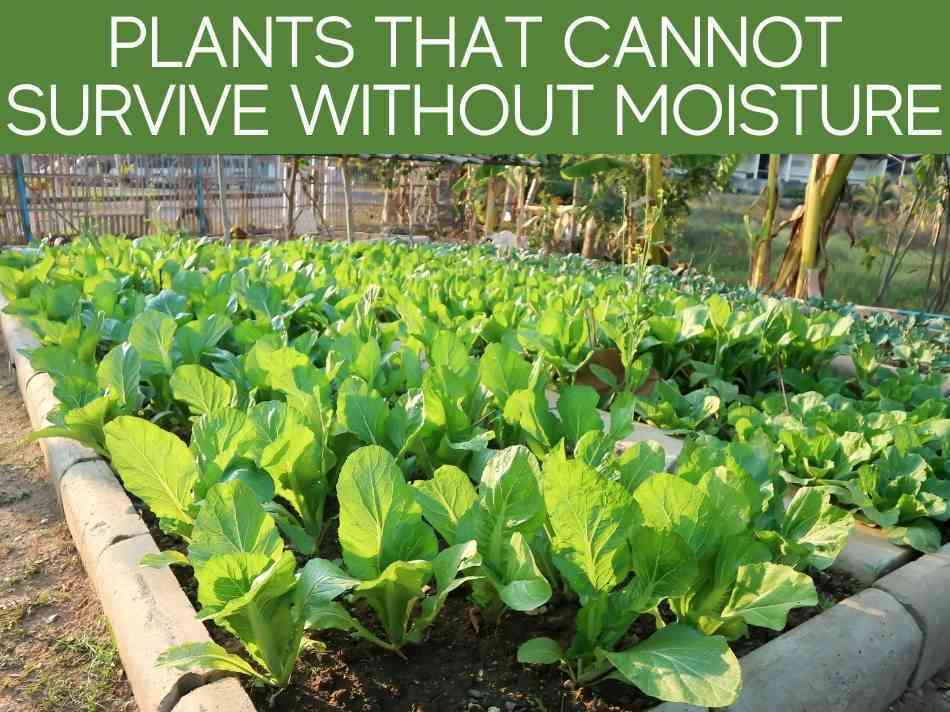
Well, technically, ALL plants need water. So, there are literally no plants that can’t survive without water.
However, there ARE plants that need very little moisture, like succulents and aeroponic plants.
And plants that require high moisture include:
- Cold-season plants
- Lettuces & greens
- Peas
- Cruciferous vegetables (cabbage, broccoli, cauliflower)
- Sweet corn (due to its shallow roots)
- Plants adapted to marshy areas (many ferns, Venus Fly Traps, cattails)
What plants grow without water?
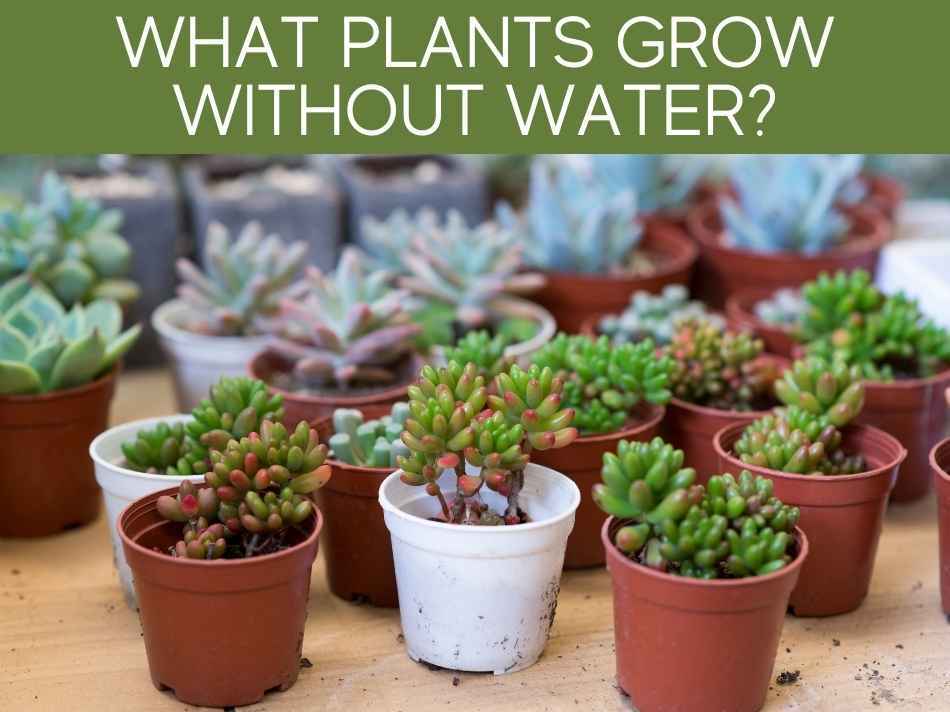
OK, so by now, you know that ALL plants require water.
But there are some that require very little water, or very infrequent watering.
These include:
- Succulents (aloe, agave, Crassulas, Kalanchoes, Howthorias)
- Cacti
- Aeroponic plants: These are plants that typically grow in humid areas, attached to tree branches. They include some varieties of bromeliads, ferns, orchids, and philodendrons.
- Some mosses (especially those that grow in deserts–yes, mosses do grow in deserts)
Can plants grow without sunlight?
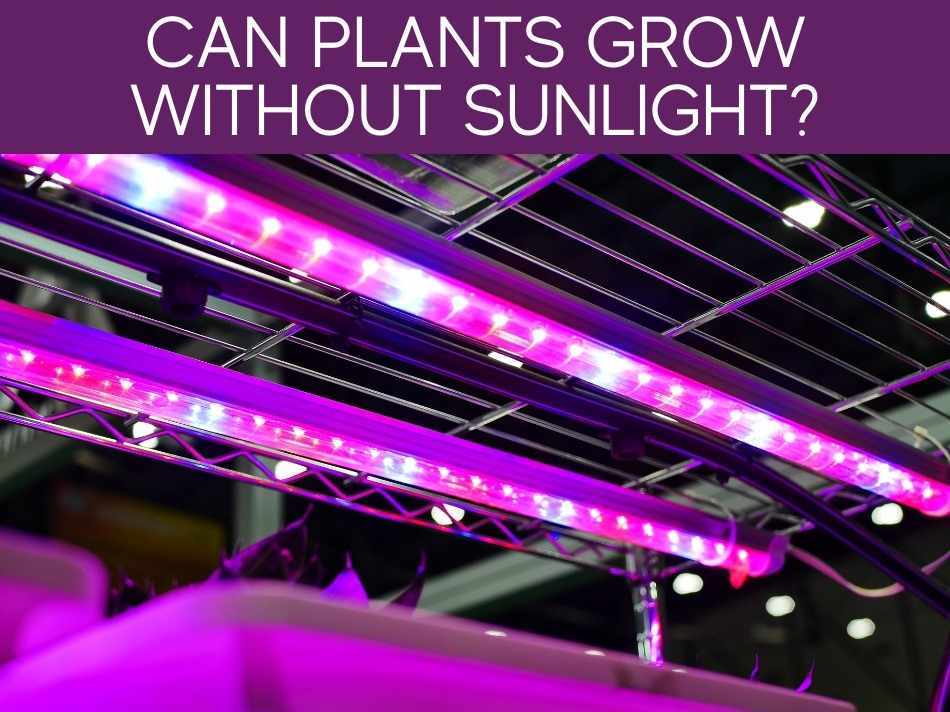
Absolutely!
Plants CAN grow without sunlight, but they DO require some kind of light for photosynthesis.
That means you can give plants artificial light–like LED grow lights–that produce enough of the right wavelengths of light for your plants to photosyntesize.
So, sunlight isn’t necessary for plant growth, but some kind of light is needed.
We’ve got more info on plants’ light requirements & grow lights:
- Do plants grow better in sunlight or artificial light?
- Does the color of light affect plant growth?
- Do LED grow lights work?
Can a seed grow without water?
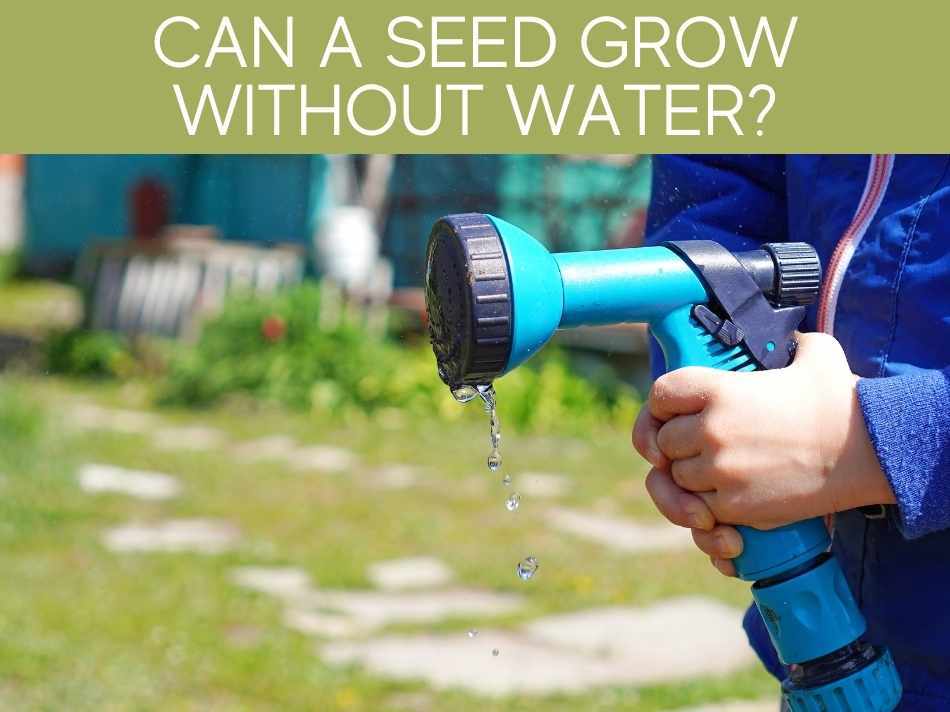
Seeds do indeed require water to germinate.
You can think of seeds as basically an embryonic plant in a state of hibernation. Not quite suspended animation, but close.
Seeds are most certainly alive. Seeds undergo some metabolic processes while waiting for conditions to be right for germination.
While seeds are waiting to germinate, they:
- Absorb oxygen
- Give off carbon dioxide
- Use their stored food reserves
One of the main reasons that seeds need moisture is that when the seed absorbs moisture, the water causes the seed to swell.
This swelling breaks the seed’s outer coat, which allows more moisture to enter the seed, kicking off growth. The rootlet sprouts, and the seed’s first leaves–the cotyledons–get larger & can emerge, breaking through the soil so they can start collecting sunlight for photosynthesis.
Without water, the seed will stay protected inside its seed coat.
To sum up
By now, it should be abundantly clear that water is crucial to plant growth. However, there are some plants that require very little water. Plus, there are things you can do to grow plants with very little water.
